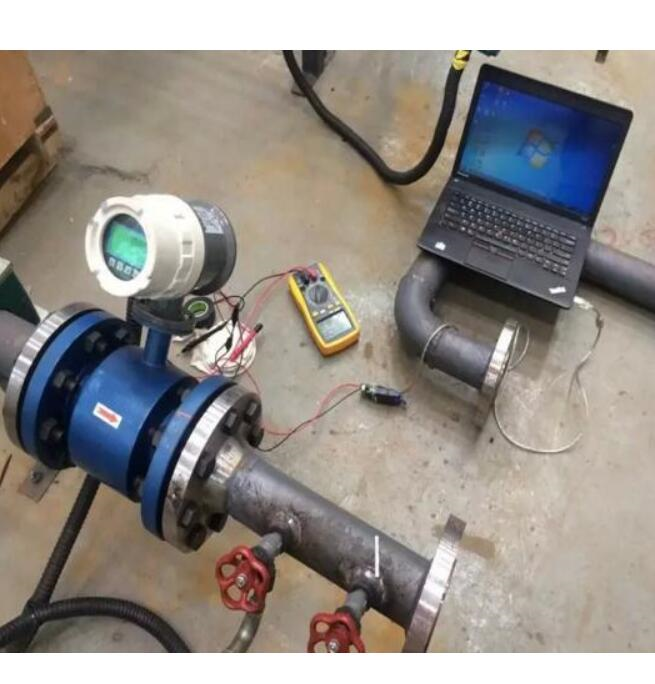What Is Turndown Ratio in Flow Meters? In simple terms, turndown ratio refers to the range of flow rates that a flow meter can accurately measure. This ratio is a crucial factor in selecting the right flow meter for your application, as it determines the meter’s ability to measure low and high flow rates with precision and accuracy.
Choosing a flow meter with a high turnover ratio can save you money and increase efficiency by eliminating the need for multiple flow meters or reducing maintenance and calibration costs. In this blog post, we will explore turnover ratio in flow meters, its importance, and how it impacts various industries.

Definition of turndown ratio
So, what exactly is turndown ratio?
Well, it’s the measurement range of a flow meter from the highest to the lowest flow rate it can accurately measure. Essentially, it tells you how much the flow rate can be turned down or decreased while still maintaining accurate readings.
For example, a flow meter with a turndown ratio of 10:1 can accurately measure flow rates from 100 L/H down to 10 L/H.
This ratio is an important consideration when selecting a flow meter for your application, as it determines the meter’s versatility and ability to handle varying flow rates.
A higher turndown ratio means more flexibility and potentially cost savings, as you may not need multiple flow meters for different flow rates.
Why is Turndown Ratio important?
In flow measurement, the turndown ratio indicates the range of flow over which the flowmeter can measure with acceptable accuracy. It is also known as adjustable range. This is very important when selecting a flow meter technology for a specific application.
If the airflow to be measured is expected to vary between 100,000 cubic meters per day and 1,000,000 cubic meters per day. The turndown ratio for a specific application is then at least 10:1. Therefore, the meter requires at least a 10:1 turndown ratio.
Formula for calculating Turndown Ratio
The turndown ratio can be expressed as:
TR = Q(max)/Q(min)
TR = Regulation Ratio
Q(max) = maximum flow
Q (min) = minimum flow
Example calculation
If the gas to be measured varies between 100000 m3/day and 1000000 m3/day.
This particular application has TR = 10:1.
The TR of the required flow meter should be at least 10:1
If the flow meter has a maximum flow rate of 2000000 m3/day, then the required turndown ratio (TR) will be 20:1
Typical turndown ratios for various flowmeters
The examples here are for gas flow, but the same gauge type can be used for liquids, with similar turndown ratios.
Different types of flow meters have varying turnover ratios. Here are some common flow meters and their typical turnover ratios:
- Differential Pressure Flow Meters: 10:1 to 100:1
- Turbine Flow Meters: 10:1
- Magnetic Flow Meters: 20:1 to 100:1
- Coriolis Flow Meters: 10:1 to 100:1
- Ultrasonic Flow Meters: 100:1 to 1000:1
- Vortex Flow Meters: 10:1 to 100:1
- The turndown ratio of the thermal mass flow meter is 1000:1.
- The actual adjustment ratio of the orifice meter is 3:1.
It’s important to note that these are general ranges and actual turnover ratios may vary depending on the specific model, size, and operating conditions. When selecting a flow meter, it’s crucial to consider the turnover ratio and ensure that it can accurately measure the flow rate needed for your application.
Choosing the right flow meter for your application
Selecting the right flow meter for your application is crucial to ensure accurate and precise measurements. Here are some key considerations when choosing a flow meter:
To maximize the turndown ratio of your flow meter, follow these best practices:
Proper installation: Ensure that the flow meter is installed correctly according to manufacturer specifications.
Regular calibration: Regular calibration of the flow meter is essential to maintain accuracy.
Maintenance: Proper maintenance of the flow meter, such as cleaning and inspection, can prolong its lifespan and improve performance.
Avoiding extremes: Avoid operating the flow meter at the extreme ends of its turndown ratio range, as accuracy may be compromised.
By considering these factors and following these best practices, you can select and maintain a flow meter that will provide accurate and reliable measurements for your application.
More Flow Measurement Solutions
Turbine Flow Meter Application Case: Demineralized Water
Industrial Gas Measurement with Digital Gas Mass Flow Meters
How to Calculate Pressure Drop in a Pipe?
Can Flow Meters Be Installed Vertically? Vertical Flow Meters
Measuring Oilfield Wastewater with Electromagnetic Flowmeter
How to Calibrate a Flow Meter?Calibration Flow Meters
In conclusion, turndown ratio is an essential factor to consider when selecting a flow meter for your application. It determines the range of flow rates that a flow meter can accurately measure, and a high turndown ratio can increase efficiency and potentially save you money.
Remember to consider the flow rate range, fluid properties, environmental conditions, and accuracy requirements when selecting a flow meter.
By following best practices such as proper installation, regular calibration, maintenance, and avoiding extremes, you can maximize the turndown ratio of your flow meter and ensure accurate and reliable measurements.
By selecting and maintaining the right flow meter, you can improve your operations and increase productivity.
Request a Quote
Wu Peng, born in 1980, is a highly respected and accomplished male engineer with extensive experience in the field of automation. With over 20 years of industry experience, Wu has made significant contributions to both academia and engineering projects.
Throughout his career, Wu Peng has participated in numerous national and international engineering projects. Some of his most notable projects include the development of an intelligent control system for oil refineries, the design of a cutting-edge distributed control system for petrochemical plants, and the optimization of control algorithms for natural gas pipelines.